
The challenges of keeping software developers engaged may be unique to this industry, but the ways that development agencies resolve those issues are not.
To retain valuable talent, and keep them enthusiastic about their work, you need to offer more than just a competitive salary—especially when they’re being wooed by lots of other companies.
In other words, you need to ensure that your company is fostering an environment where developers are respected, supported, and empowered to grow.
A few key strategies can help make sure your developers feel valued and professionally fulfilled. Let’s see what they are!
Table of Contents
Provide them with clarity about their job
Role ambiguity is a pervasive problem in development agencies. It is one of the biggest sources of friction in development teams and one of the hardest problems for companies to fix.
Why is it so hard?
Because the organization itself breeds ambiguity with its very structure: layering, cross-functional vs. functional teams, ambiguous role titles, etc.

Bug & crash reporting tool for mobile apps.
The state of the industry doesn’t help either: there are no universally accepted titles or career paths in software development.
In fact, according to studies, 47% of employees report a lack of clarity about job roles. With software developers, the situation is probably even more dire.
And when this happens, it can lead to lowered productivity, dissatisfaction, and a high turnover rate.
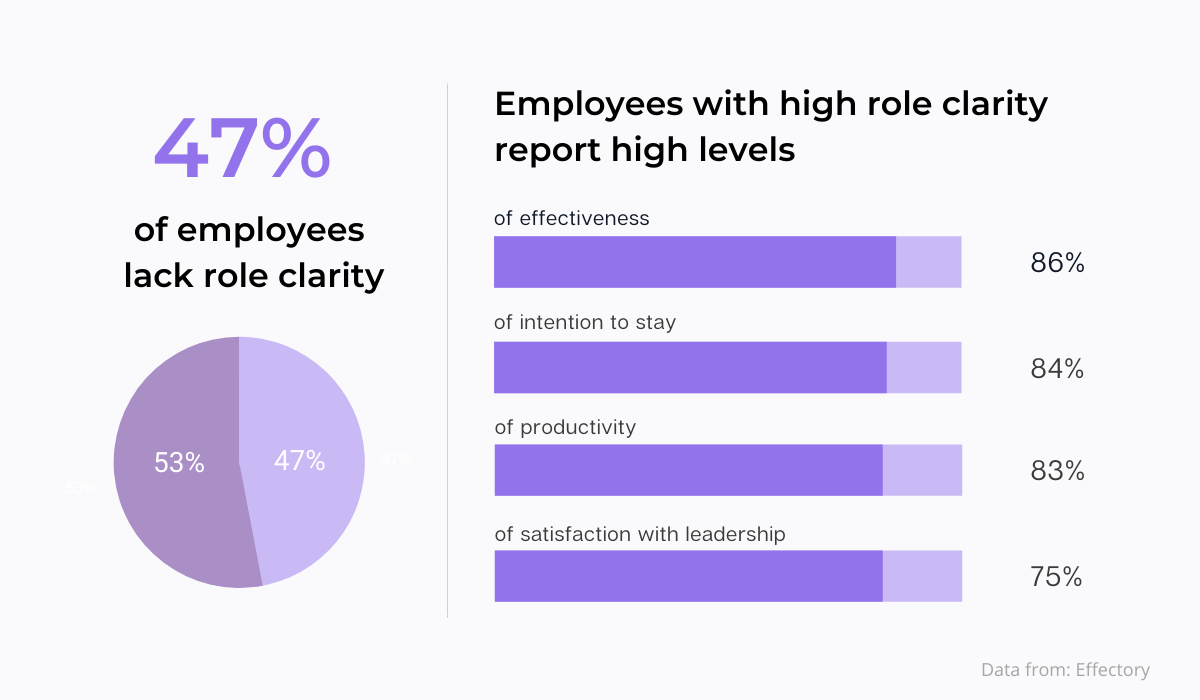
The solution is to invest time into making a structure or architecture by which all developers will understand what their roles and responsibilities consist of and being in charge of meeting those expectations.
Take Shopify as an example.
Their innovative approach to role clarity has been written about widely, and many have visited their Stockholm offices to get a glimpse of how they do what they do.
While there is a whole philosophy behind it, we’ll keep it short by saying that at Spotify they use small, multi-disciplinary autonomous teams to do the work called squads.
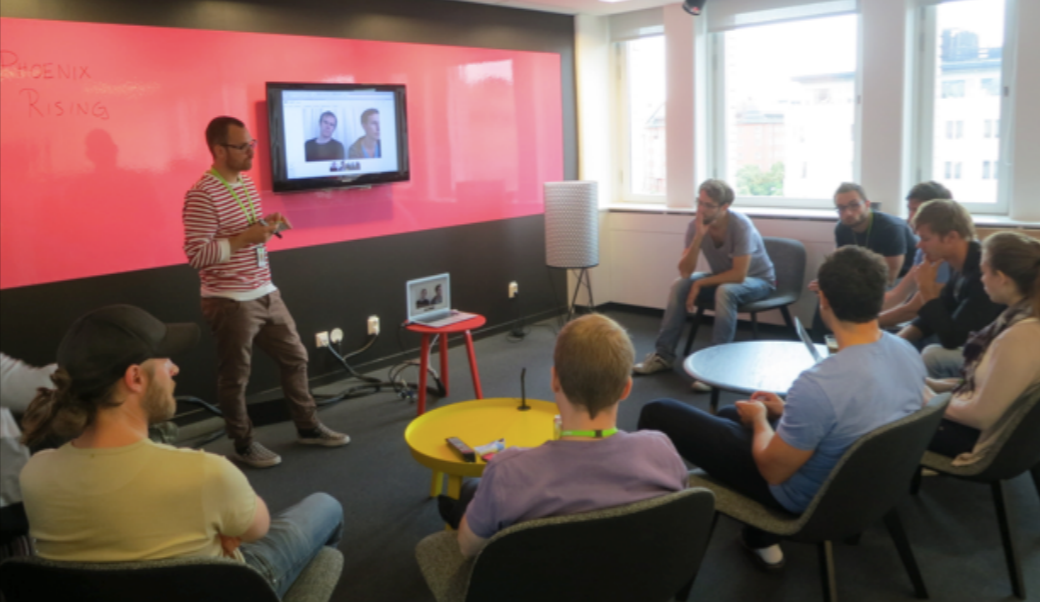
As you can see in the picture, squads are teams consisting of about 10 employees that work on specific parts of the product.
Each squad has three main roles: a product owner, a scrum master, and the developers.
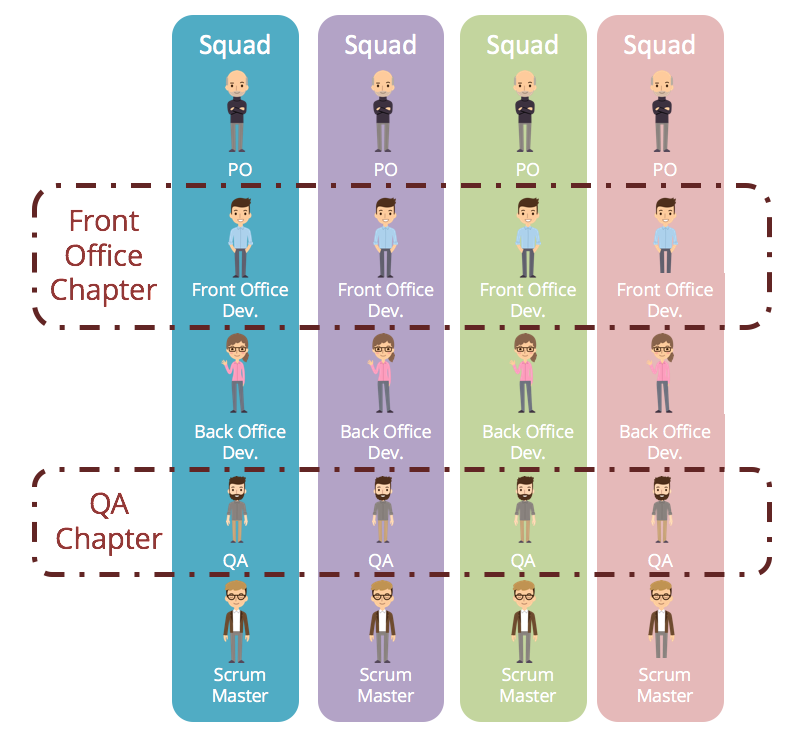
The product owner decides what features need to be developed, but also makes sure that every member of the squad knows what they’re working on at all times.
The scrum master makes sure that all the processes are being followed correctly and that there are no barriers to getting work done.
And finally, there are the developers who do all of the work on the ground. Each squad has front-end developers, back-end developers, and QA engineers.
By being clear about the roles, they managed to create productive and engaging teams of developers where everyone knows what their job and responsibilities are.
No wonder 90% of respondents stated on Glassdoor that they would recommend Spotify to a friend.

Remember, role clarity is like a centerline on the road. When it’s clear, everyone knows where they should be driving. That leads to smooth progress.
But when the centerline is missing or blurred, everyone is on their own and that leads to confusion, disagreements, and collisions.
So before everything else, make sure to provide clear guidelines so everyone in your development team knows exactly where they should be going and what they should do to get there.
Consider their ideas respectfully
Software developers understand the technical aspects of the project better than anyone else on the team.
They are well-versed in technology and have a good sense of what can and can’t be accomplished.
Granted, their ideas may not always be perfect or even feasible, but they’ll probably be worth considering regardless.
So the question is, how should development agencies consider their ideas with appreciation and respect?
The first thing to keep in mind is that developers are not just writing code. They’re thinking about problems from many different angles.
In fact, they are often curious, inquisitive, problem-solvers, and have an analytical mindset.
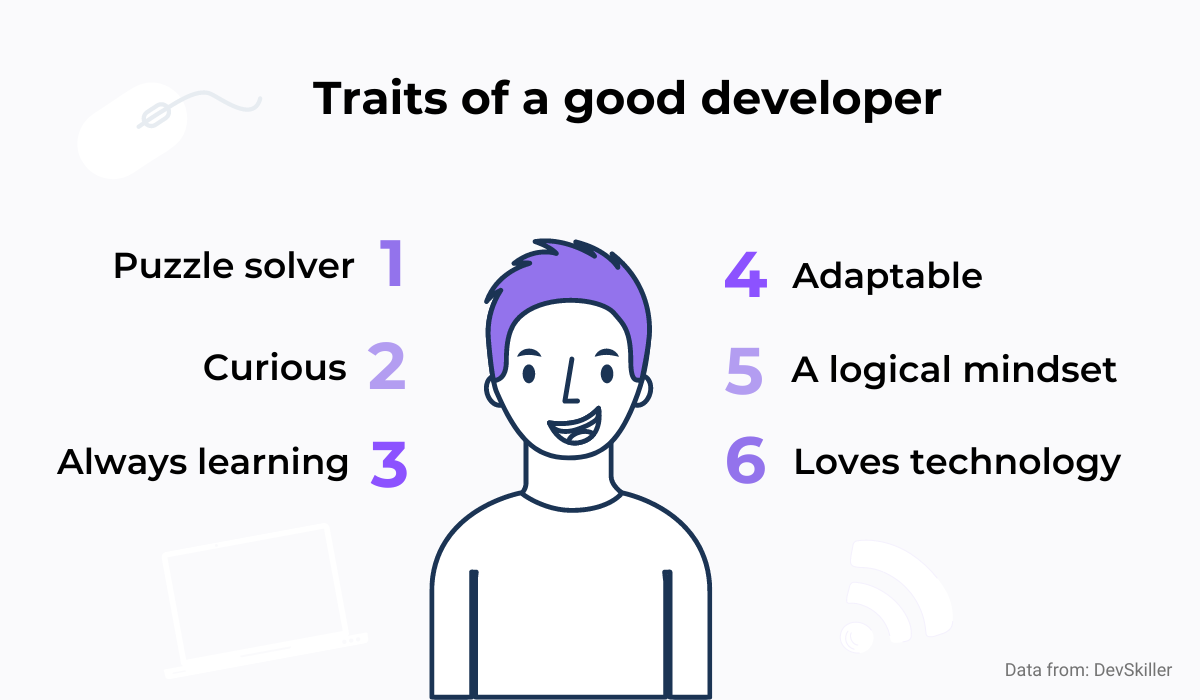
That means that most of their ideas will be at least worth considering, even if development agencies don’t end up taking them up on it.
Therefore, you should start by creating a culture where developers are encouraged to be creative and innovate and feel comfortable speaking up about their ideas.
For example, a Quora user shared a story of a message written on a whiteboard in their company stating that creativity and innovation combined lead to success.
That message was constantly repeated to the employees as a sort of mantra.

The message served as a daily reminder to developers that all their ideas, no matter how good or bad, big or small, are welcomed and appreciated, which is a good way to foster a culture of innovation and expressing ideas.
Another good practice you can follow is allowing developers to work on their passion projects during their work hours.
After all, companies like Google are already reaping the benefits of this approach to their developers’ ideas.
For example, Google became famous back in the day for the “20% time” policy that lets their employees work on side projects and pet ideas, while on the job.
Now they’ve gone a step further and created Area 120, the company’s in-house incubator for such projects.
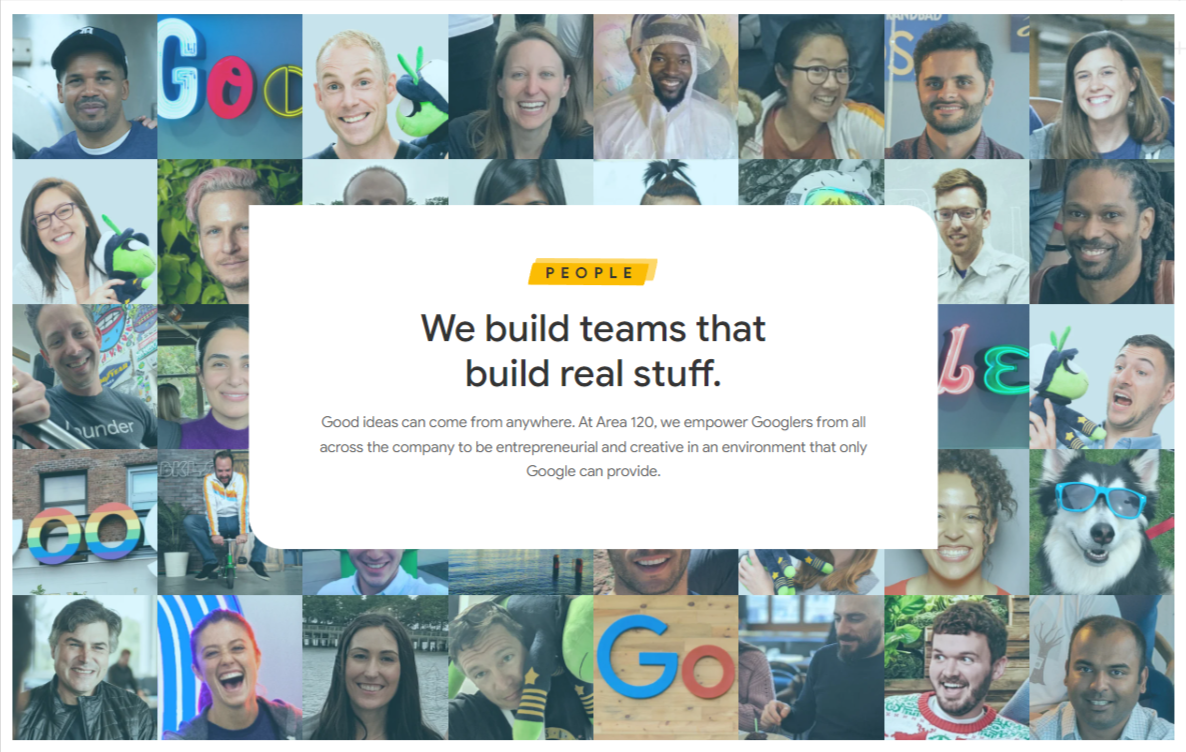
Here Googlers (as the Google employees are called) get a chance to turn their cool ideas into real businesses without having to leave the internet giant.
The idea is to create a space where Google employees can try out ideas and see if they gain enough traction that they can turn into full-fledged products or companies.
Employees accepted into the program leave their old jobs and work out of three offices, in San Francisco, Palo Alto, and New York.
They also receive financial support and consultation from Area 120 leadership, fellow founders, and experts.
What started as an HR experiment in 2016 has since evolved into a substantial program that has launched more than 50 projects, such as Grasshopper, Stack, AdLingo, to name just a few.

Some of these ideas go on to become standalone companies or divisions within Google; some live on as parts of other existing products; some fail altogether. A few have even returned to the mothership.
But what’s important is that at Google, the Area 120 incubator offers a path for developers to pursue their ideas by launching their own startups.
And the whole concept offers clear proof of how approaching developers’ ideas with respect and recognition can go a long way in making the company more innovative and successful in the long run.
Stop blocking their workflow
When it comes to software developers, the best way to boost their engagement is to stop blocking their workflow.
Many things can derail a developer’s flow. Sometimes it’s something as simple as having an unanswered email. Other times it takes the shape of an endless meeting.
Very often it comes in the form of constant interruptions by other employees, tedious administrative tasks, or continuous interventions by upper management.
Distractions can even be bug reports that developers have to deal with daily.
And all of these things slow down progress on important projects, as it can be really hard for developers to return to the state of focus on the task after they’ve been interrupted.
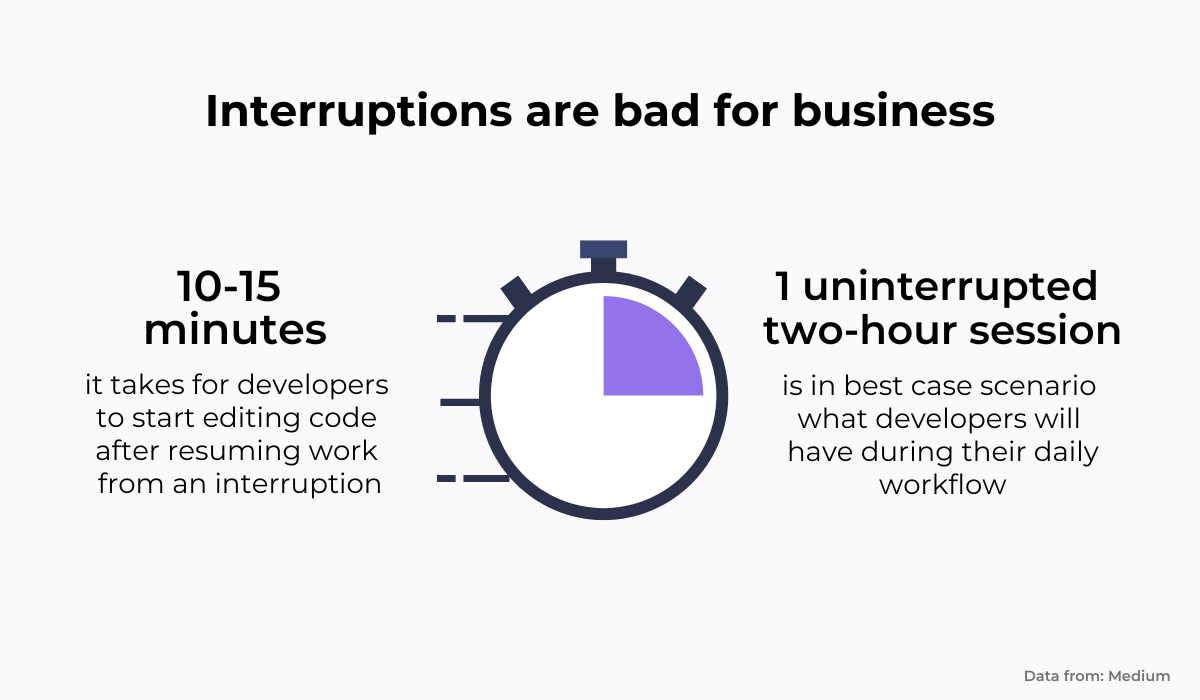
In other words, when you stop blocking their workflow, your developers will be able to do what they do best: code.
So, here’s a list of the big dos and don’ts when it comes to the workflow of your development team:
| Do | Don’t do |
| Notify developers before dropping by for a quick discussion about projects | Stop adding requirements in the middle of a project |
| Make sure there’s a reason behind each meeting request you send out | Stop overwhelming them with administrative tasks |
| Automate as much of their workflow as possible | Stop micromanaging every step they make |
As you can see, one simple solution is giving developers a heads up before dropping by for a quick chat about their progress or upcoming projects—it’ll give them time to wrap up whatever they were working on and shift their attention toward you.
Keep your meetings constructive and short. Be mindful of how much time you’re asking people to spend away from their tasks and don’t send emails unless they’re necessary.
Also, micromanagement should be avoided at all costs, as it can affect the morale, motivation, and engagement of your developers.
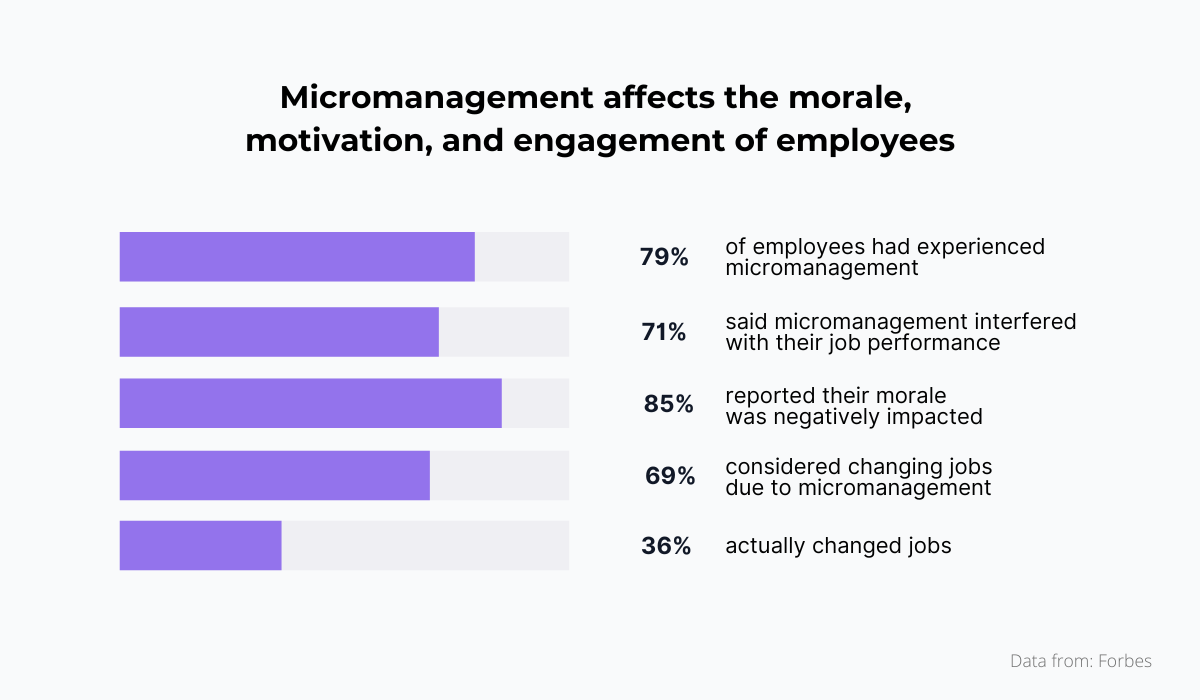
Every time developers have to ask permission, they’re blocked from doing what they want to do.
So if you’re trying to build a top-notch development team, it’s important to create an environment where developers can do their job freely without constantly seeking approval.
And finally, automation. The more your developers spend time manually testing and rolling back code releases, the less productive they are going to be.
For instance, too often software developers have to stop what they’re doing to fix bugs.
It’s a trial-and-error process that requires developers to go through line by line, testing out different hypotheses until they find a solution.
In other words, it’s time-consuming, mentally taxing work that can be very frustrating, and block their workflow.
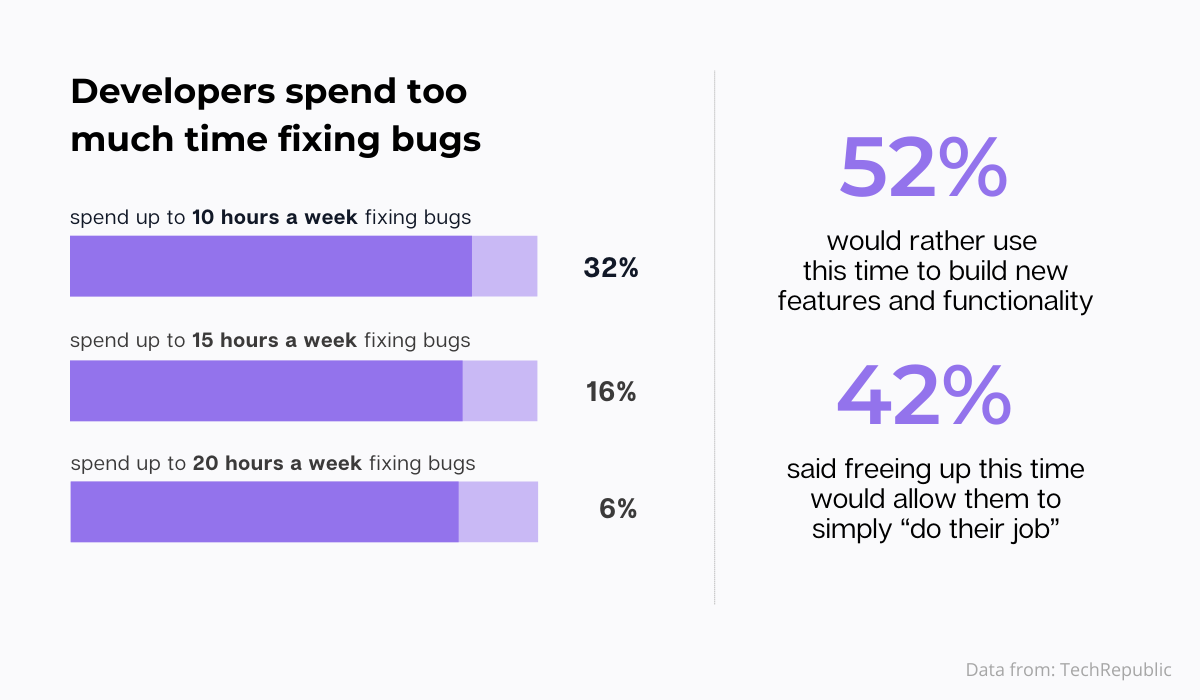
Development teams should automate as many of these tasks as possible to reduce multitasking and increase productivity.
For example, with our software, Shake, developers can fix bugs 50 times faster than usual, as well as make improvements in other areas of their app.

Whenever users notice a bug, they just shake their phone to report it, without ever having to leave the app.
Once the bug is reported, Shake analyzes user feedback and automatically files a full bug report.
Tools like Shake can be a great help for developers to get their work done faster and focus more on their work instead of having to wade through mountains of bug reports every day.
Remember, the productivity and effectiveness of your developers come from fluidity and agility.
When they’re in the zone, they can accomplish amazing feats, but when they’re interrupted, their flow is broken, and the results aren’t there.
So if you want your development team to be as productive and engaged as possible, do everything in your power not to distract their workflow.
Know their market value
Keeping top talent is a perennial issue for companies across all industries. But with the increasing scarcity of skilled software developers, it’s more important than ever to do so.
Attracting, retaining, and motivating developers requires a deep understanding of how they think—and more specifically, how they value their own worth as software developers.
According to a Stack Overflow survey, a fair salary is one of the most important contributing factors to the developers’ satisfaction.
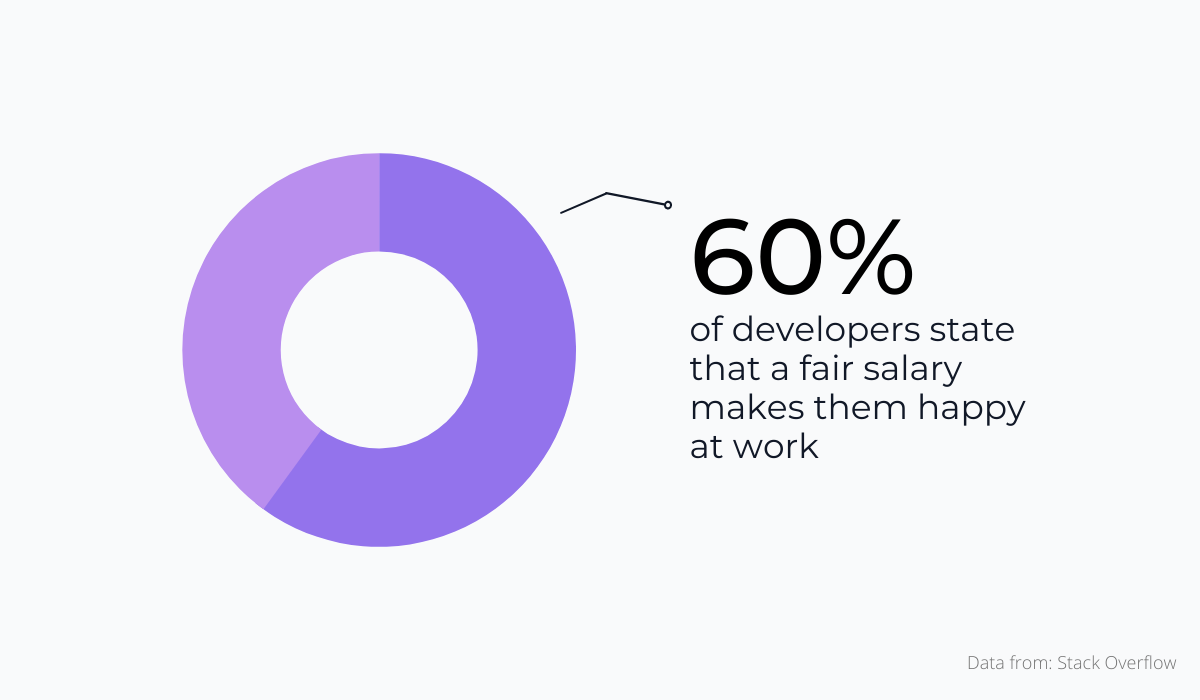
If developers feel underpaid—or if they feel like they’re being paid enough but not more than at other places—then they’ll likely start looking for another job elsewhere and will be less motivated in the interim.
For example, Amazon is one of those companies that are doing the right thing in terms of their software developers’ salaries.
They use a system called Levels to determine how much software developers earn. The Levels system was created based on the work experience of software developers and their skills.
Software engineers at Amazon are divided into levels 1 to 7, with level 1 being the most junior and level 7 being the most senior position.
Here’s a picture with an example of how it breaks down for levels 4 to 7.
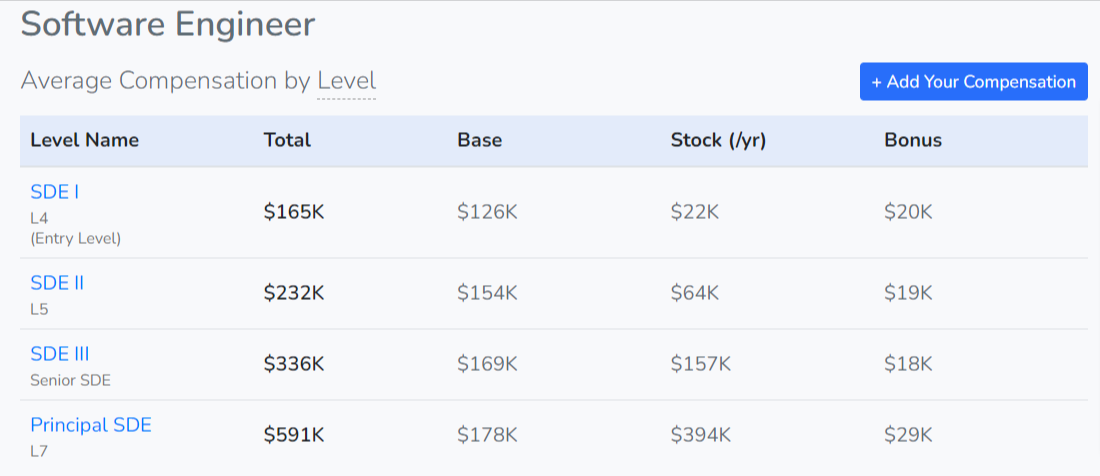
Bear in mind that these salaries are not set in stone, and can vary heavily depending on the department, years of experience, skills, and other important factors.
But what’s important here is that Amazon not only pays competitive salaries, but salaries are also determined by merit and not by random factors such as what you can negotiate with your manager or when you have joined the company.
Which can be great for developers’ morale.
Plus, by introducing different levels, they are offering developers a lot of room for growth and development, which is also very important for their overall satisfaction.
No wonder Amazon is ranked as one of the best employers for software engineers year after year, and gets great reviews like the one in the following picture.
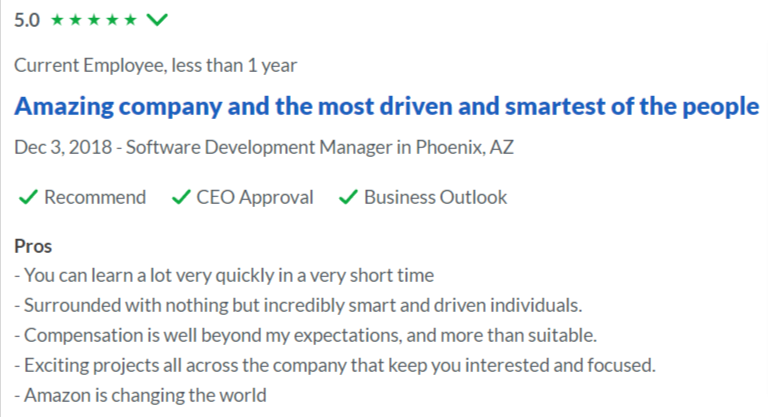
From everything that has been said, it’s clear that knowing the market value of your software developers is great for their engagement.
As you already know, good developers are difficult to find, and even more challenging to retain.
So it’s not only important to keep them engaged and happy but also to know how competitive they are in the marketplace.
After all, they’re an asset to your company that you don’t want to lose any time soon.
Remember they are human
Because of the nature of their job, developers are often tasked with performing complex tasks in a short amount of time.
While deadlines and productivity are important, you should never forget that your development team is made up of human beings.
It’s easy to put them on a pedestal and think that they’re not affected by the same issues as other employees.
On the contrary, you need to show them the same respect you show others as not being valued is one of the biggest reasons why tech employees consider a job change.
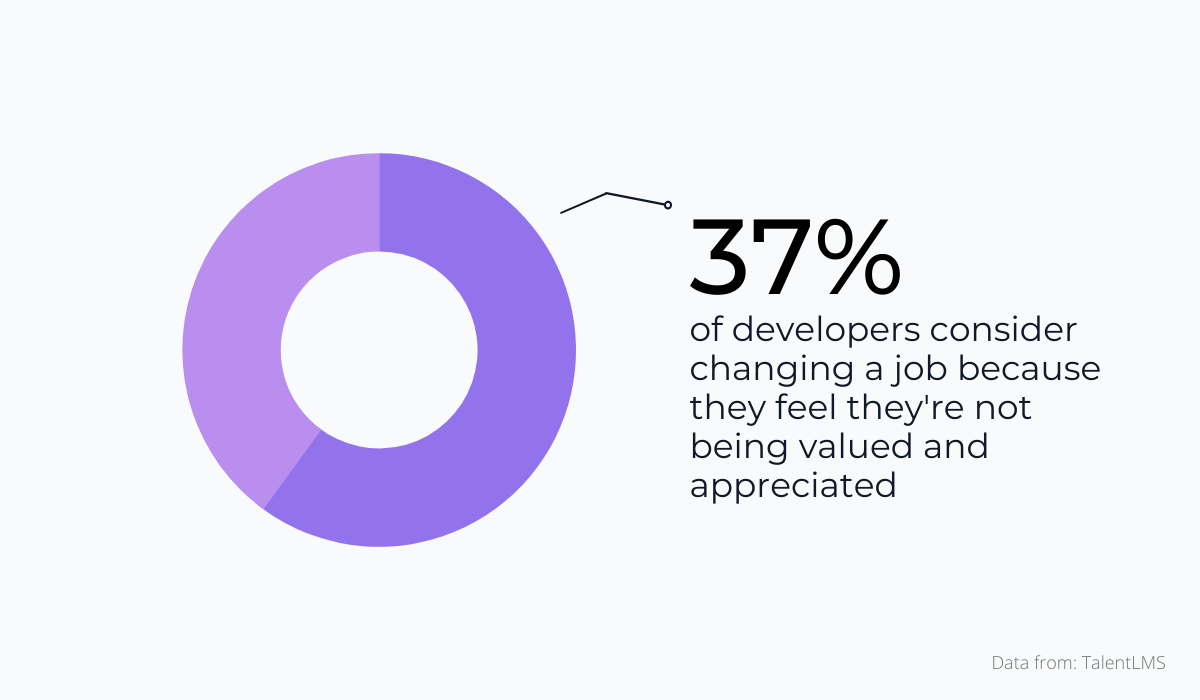
Remember that your developers have feelings and emotions–this can sometimes be forgotten in a professional setting.
Therefore, if you’re going to criticize their work, do it in private instead of calling them out in a public meeting or emailing your concerns to the entire company.
If you want to make sure they feel appreciated, don’t forget to acknowledge their work.
For example, a simple thank you from a CEO can go a long way in making them feel special and valued, as we can see in the example from NetApp.
At NetApp, former Vice Chairman Tom Mendoza used to ask managers to notify him when they “catch someone doing something right.” Then he would personally call 10 to 15 employees every day to thank them for their contribution to the company.
Or, as he sums it up in his tweet, nothing can make employees feel good about themselves and the work they do as a good old “thank you”.

The result was a culture where people felt proud of what they did and they kept doing it over and over again.
Software development can also be stressful, so keeping in mind their mental health and the possibility of burnout is another great way to acknowledge that they are also human, and not just coding superheroes.
For example, tech giant Cisco acknowledges that employees need to rest and relax from time to time in order to be more engaged and productive.
That’s why it gave its nearly 76,000 global employees a day off for mental health in May 2020, followed by another day off in August to “unplug.”
Plus, it has also awarded them with paid time off on birthdays.
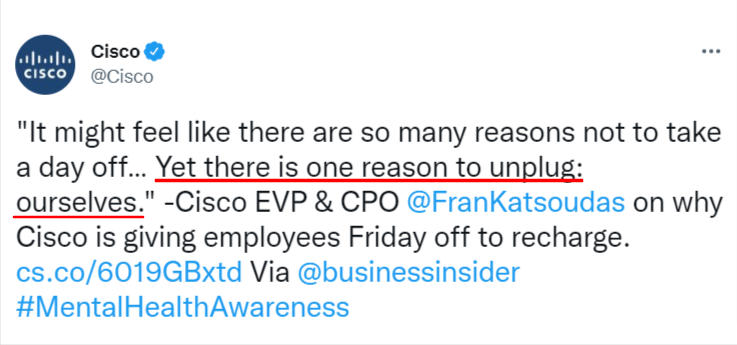
This company’s policy is meant to encourage employees to disconnect from work and recharge batteries.
Also, it would be beneficial to give them time off during the week to take care of themselves and their families (e.g., doctor appointments).
Don’t force them to go on unnecessary trips and have empathy for them when they’re sick (they don’t have superpowers).
For software development agencies, it’s important to remember that the developers are just as human as anyone else.
They might be great at coding, but they’re still people who have needs and feelings.
If you keep this in mind when you’re communicating with them, you’ll find it much easier to get along with them and motivate them effectively.
Conclusion
In this article, we’ve given you a few tried and tested tips on how to keep the wheels of your software development team turning.
A team that feels inspired, creatively fulfilled, and supported will be better able to push their work forward productively.
Therefore, let them do their job, make sure they are rewarded for their work and don’t forget to give them space and time to unplug.
After all, when your software developers are engaged and motivated, everyone wins!




